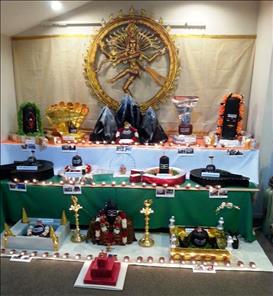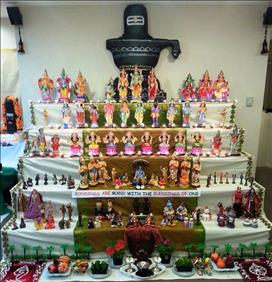How do you learn about your heritage and culture?
Do you learn Maori culture by watching the haka at the start of an All Black game?
No.
Do you learn Indian heritage from seeing Bollywood dancers perform at Diwali?
No.
Heritage and culture are learned at home.
In India, it is easy, with Temples found in almost every street corner and devotion practised on a daily basis.
But in New Zealand it is easy to forget your roots as you become immersed in the new culture. Life here is so different from India. Temples are far away, grandparents, aunts and uncles are back in India and in many families both parents work outside the home.
Yet as the guardians of the new generations of New Zealand Indians, I believe that you have a responsibility to your children to ensure that they do not forget their Indian heritage.
We talk about ‘Sunday Christians,’ people for whom religion is not a part of everyday life, but is something that is reduced to just one hour on Sunday for worship.
Take our Christmas celebrations; for many, Christmas is about getting presents, not about our Lord Jesus Christ.
That has not been my experience with my Indian families- spirituality is an integral part of everyday life.
I am a fifth-generation New Zealander and for the last two years, I have been privileged to attend Navaratri celebrations at the home of Shanti and Ravi in Auckland.
Navaratri is a festival dedicated to the worship of Goddesses Durga (Parvathi), Lakshmi and Saraswathi.
‘Navaratri’ means nine nights during which nine forms of Shakti (or Devi) are worshipped. Children are always encouraged to participate in prayers.
Immersion into regular group chanting and other similar activities is like spiritual vaccination for the children.
I watched fathers taking their children to the altar and demonstrating what to do, by example. I saw young boys carrying the sacred flame to the devotees.
On no occasion did I see tantrums or bad behaviour from children, which I have to say, would not be the case with many New Zealand children!
These Indian children are being taught, “This is what we do, and this is how we behave.”
Although we gather regularly for chanting, there is something different about the assembly for Navaratri. For a start, the house is specially decorated with an elaborate ‘Kolu’ display, which may have taken the whole family about six or seven weeks to assemble and the placements discussed at length.
Last year it was centred on the Temple of the Seven Hills (Tirumala or Tirupathi, the abode of Lord Venkateswara). This year the focus was on Lord Shiva.
The Kolu appears as a series of steps (usually Seven, Five or Three) with the first dolls being placed on it being made of wood, the ‘Marappacchi.’
There is an order to the steps. The lower steps display grasses, plants and things of the Earth; the next step is occupied by insects, birds and animals, followed up by dolls of human beings, signifying that people can reach the place if they adhere to the principles of life suggested by the legends.
The top shelves are occupied by different Gods signifying the higher plane of attainment.
There was a real air of excitement as people arrived on the first evening.
I was not the only one to experience this.
As one woman said to me, “Can you feel the spiritual atmosphere? It is so exciting to be here”, because sharing of food and being together for nine continuous evenings increases the bonding between all attendees.
I am thankful to the Gods who allowed our paths to cross. Couples like Shanti and Ravi keep the flame of Hindu culture alive, and hopefully in our small way the collision of our two cultures (New Zealand and Indian) will help encourage understanding and spread the much wanted Love and Peace in today’s world.



Sheryl is a Kiwi who, thanks to her chanting group friends, is now the ‘New Zealand Grandmother’ to three of their children.
Editor’s Note: The 12 ‘Jyotirlingas’ seen in the picture here are replicas of the originals found in different regions in North, West, East and South India. According to Shiva Purana, Lord Shiva established these ‘Jyotirlingas’ at the end of a tyrannical or pious episode as His own manifestation, to prove the point that He will always destroy evil. The Replicas decorating Ravi’s home were collected by Shanti’s father Vaidyanathapuram Gopalakrishna Vaidyanathan.
The Twelve Jyotirlingas are at Kedarnath in the Himalayas; Bhima Sankar in Dakinya; Viswesvara in Varanasi; Triambaka on the banks of River Gautami; Somnatha in Saurashtra; Mallikarjuna in Sri Sailam; Maha Kala in Ujjain; Amareswara at Omkara; Vaidyanatha in Chitha Bhumi; Nagesa at Daruka; Rameswara at Setu Bandhana; and Ghrishneswara (Orissa)
1. Replicas of the Twelve Jyotirlingas
2. The Kolu at the residence of Shanti and Ravi
3. The nightly assembly during Navaratri transcends languages and even nationalities
(Pictures by Prashant Shenoy)




